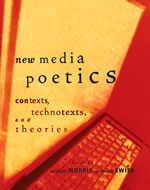Next month’s ISEA will be showcasing quite an array of electronic artwork. While San Jose ain’t quite the Baltic Sea (gang + 1 2 3 4 5 6 7), it’s much easier for North Americans like us to get to. Scanning the list, here’s a few previews that stood out to me, that may be of particular interest to GTxA readers. Text and images excerpted from the site.
 Wildlife, Karolina Sobecka
Wildlife, Karolina Sobecka
At nighttime projections from moving cars are shone on the buildings in the industrial/abandoned part of town. Each car projects a video of a wild animal. The animal’s movements are programmed to correspond to the speed of the car: as the car moves, the animal runs along it, as the car stops, the animal stops also. Aggressive driving is reflected in the aggressive behavior of the animal. The animals are avatars of the drivers, who, enclosed in their bubble of safety, are separated from the stark and dangerous world of urban reality, as being in a different universe. Several vehicles can be taking part in the performance, creating interactions between the various animals, as the vehicles pass or get closer and further away from each other.
 Amy and Klara (also see full project page), Marc Böhlen
Amy and Klara (also see full project page), Marc Böhlen
Amy and Klara are robot characters capable of synthetic text to speech generation and automated speech recognition, for which the charged world of foul language is under investigation. Swearing offers several interesting conduits into a critique of the under-exposed normative tendencies in automated language representation and social robotics. Why are most smart gadgets and toys friendly and playful, why are they usually modelled as pets or servants? Machines that curse and pick a fight might offer a more realistic preparation for a shared future between machines and humans.
 Feral Robotic Dogs (alse see full project page), Natalie Jeremijenko
Feral Robotic Dogs (alse see full project page), Natalie Jeremijenko
OUT THERE, in happy family homes, in the offices of corporate executives, in toy stores throughout the globe, is an army of robotic dogs. These semi-autonomous robotic creatures, though currently programmed to perform inane or entertaining tasks: begging for plastic bones; barking to the tune of national anthems; walking in circles; are actually fully motile and AWAITING FURTHER INSTRUCTIONS.
This is a preview of
ISEA06 Sampler
.
Read the full post.






 With a
With a 


